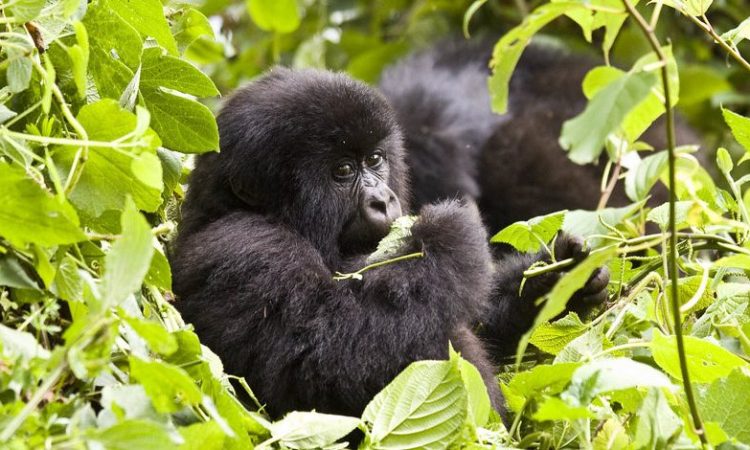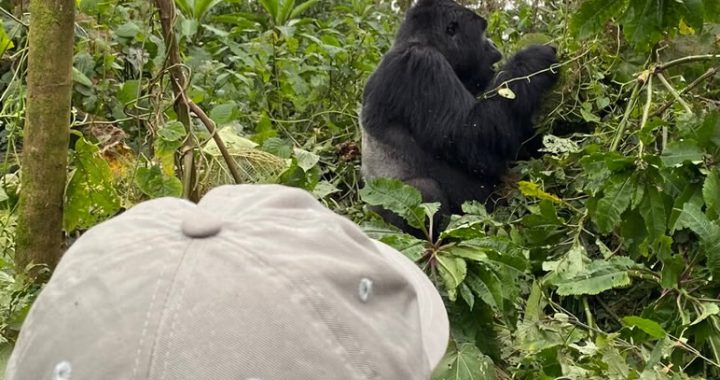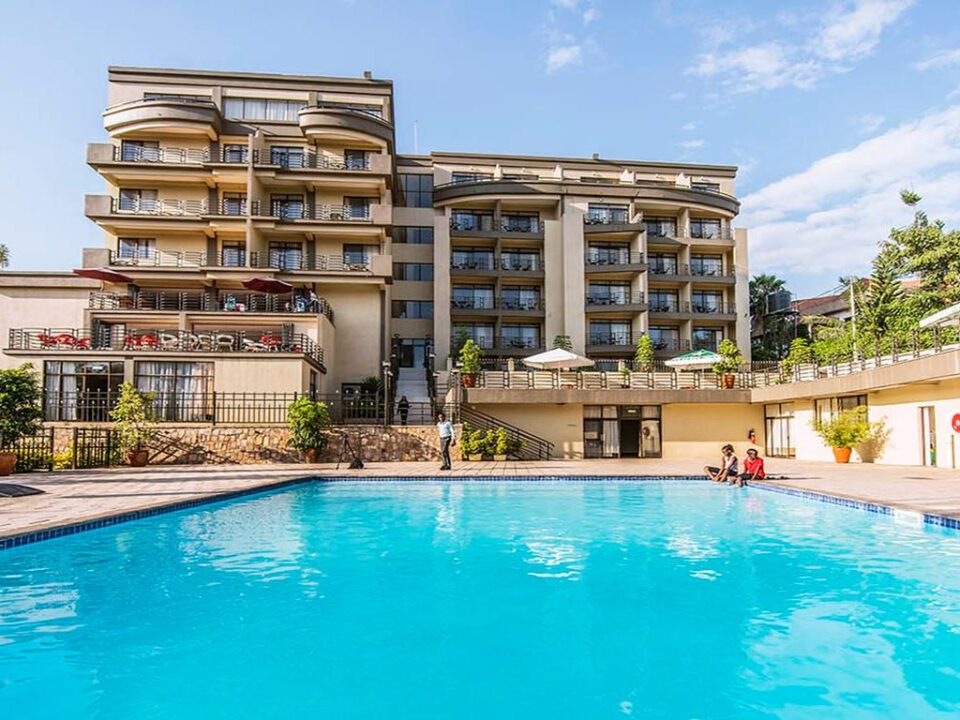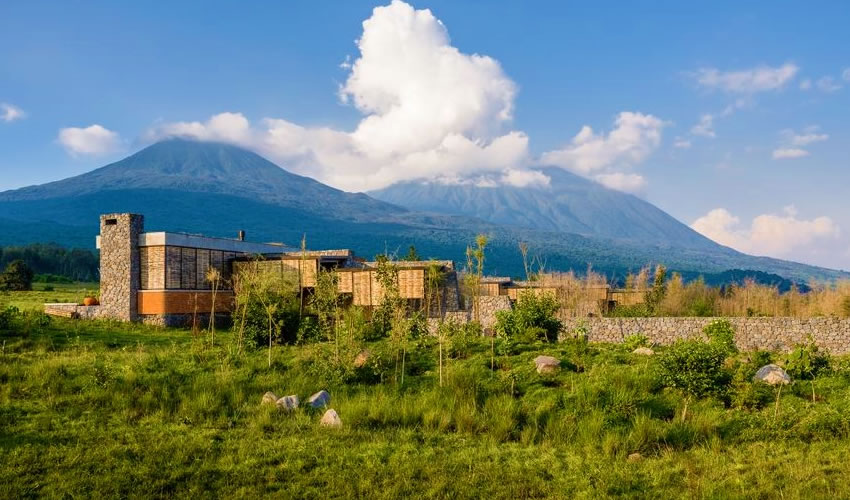- GET IN TOUCH WITH US:
- +256 753518160
- +256 777842166
- info@experiyatourcompany.com

What gear do I need for gorilla trekking in Rwanda?
November 13, 2025Can I combine gorilla trekking with chimp tracking in Rwanda?
November 13, 2025Is Gorilla Trekking Physically Demanding?
Gorilla trekking in Rwanda is one of the most extraordinary wildlife encounters on the planet, drawing travellers from every corner of the world to the mist-covered volcanoes of Volcanoes National Park. The chance to observe endangered mountain gorillas in their natural habitat—feeding, grooming, playing, or simply resting under the forest canopy—is a deeply emotional and transformative experience. But before taking on this unforgettable adventure, many travellers ask an important question: Is gorilla trekking physically demanding? The answer depends on several factors, including your fitness level, the specific gorilla family you are assigned to, and the environmental conditions on the day of the trek. This detailed guide explores the physical demands of gorilla trekking and helps you understand what to expect, how to prepare, and why the experience is worth every step.
Understanding the Terrain of Volcanoes National Park
To fully grasp why gorilla trekking can be physically demanding, it helps to understand the environment you will trek through. Volcanoes National Park sits in Rwanda’s northern region, high in the Virunga Mountains. This volcanic landscape is covered by thick montane forest, bamboo zones, dense vegetation, and steep slopes. The trails are not paved, and many routes are naturally formed by animals or created by trackers cutting through vegetation.
The altitude ranges between 2,500 and over 4,000 meters. At these elevations, air becomes thinner, and you may find yourself breathing more heavily, especially during uphill climbs. The forest floor may be muddy, slippery, or uneven, especially during the rainy seasons. These environmental conditions make the terrain challenging, but also incredibly rewarding, as every turn reveals a breathtaking landscape rich in biodiversity.
The Physical Challenges You May Encounter
While gorilla trekking is not an extreme sport, it is certainly more physically engaging than a simple nature walk. Several factors contribute to the physical demands you may experience.
First, treks can last anywhere from one to six hours round-trip. The exact duration depends on the location of the gorilla family on the day of the trek. Some families stay near the forest edge, making the trek shorter, while others move deeper into the forest or higher up the slopes, requiring longer and more intensive climbing.
Second, the trails include steep ascents and descents. Some sections require careful footwork, especially when navigating slippery rocks or muddy ground. In certain parts of the forest, guides may need to use machetes to clear paths, requiring trekkers to pass through thick or thorny vegetation.
Third, the altitude can make physical exertion feel harder than at lower elevations. Even if you are relatively fit, trekking at high altitudes forces the body to adapt to lower oxygen levels, which can make the trek feel more strenuous.
Finally, weather conditions play a role. Rainstorms can make the trails muddy and harder to navigate. Even in dry seasons, mist and dew can create slippery sections. Temperature variations—from cool mornings to warmer midday conditions—mean your body needs to adjust frequently.
Fitness Level: How Much Does It Matter?
One of the advantages of gorilla trekking is that you do not need to be an elite athlete to participate. People of varying ages and fitness levels successfully complete the trek every day. However, having a moderate level of fitness makes the experience more comfortable and enjoyable.
Travellers who are used to walking or hiking will likely adapt quickly to the terrain. If you are not regularly active, you may find the trek more challenging, but manageable with frequent breaks and proper preparation. Many trekkers prepare by doing light cardio exercises, daily walks, or simple hill training in the weeks before their trip.
Guides always set a comfortable pace and ensure no one is left behind. The trekking groups are organized based on fitness level whenever possible. During the briefing session at Kinigi headquarters, you can request a shorter or easier trek if you prefer. The Rwanda Development Board staff do their best to match your request to a suitable gorilla family.
Porters: Essential Support for a Comfortable Trek
Hiring a porter is one of the best decisions you can make during gorilla trekking, regardless of your fitness level. Porters assist you by carrying your backpack, helping you navigate slippery terrain, and offering physical support during difficult sections. They are incredibly experienced on the forest trails and can make the trek feel much easier.
Porters are available at the trailhead, and hiring one not only improves your comfort but also supports local communities. Many porters are former poachers who now earn a sustainable livelihood through conservation-friendly work. Their help reduces physical strain and allows you to focus on the beauty around you.
Trekking Poles: Helpful for Balance and Support
Trekking poles can greatly reduce the physical challenges of the trek. They provide stability on steep slopes, help reduce pressure on your knees, and improve balance on muddy or uneven terrain. If you do not have your own poles, some lodges or guides offer them for rent or purchase.
Even if you consider yourself fit, trekking poles can make a significant difference, especially during descent, when your knees and ankles bear most of the strain.
Weather Conditions and Their Effect on Physical Difficulty
Weather plays a major role in the physical demands of gorilla trekking. Rwanda experiences two rainy seasons and two dry seasons. During rainy periods—March to May and October to November—the trails can be significantly more challenging due to mud and slippery vegetation. Waterproof boots, gloves, and gaiters are essential during these months.
Dry seasons—June to September and December to February—offer more stable trekking conditions, but the forest remains humid, and occasional showers still occur. Regardless of the season, trekkers should be prepared for both wet and dry conditions, as mountain weather can shift quickly.
The Reward of the One-Hour Gorilla Encounter
While the trek itself may be physically demanding, the reward of meeting the gorilla family makes every effort worthwhile. After navigating through the lush forest, you finally reach the gorillas, often sitting peacefully, feeding, or caring for their young. The one-hour encounter is one of the most intimate wildlife experiences anywhere in the world.
During this hour, you often forget the difficulty of the trek. The emotional and visual impact of being surrounded by these gentle giants creates a sense of awe and deep connection. Trekkers frequently say that the moment they lock eyes with a silverback or watch a baby gorilla tumble through the foliage, all the physical exertion instantly becomes insignificant.
Tips to Prepare for the Physical Demands of the Trek
To ensure you have a successful and comfortable trekking experience, consider the following preparation tips.
Start light physical activity at least a few weeks before your trek. This can include brisk walking, stair climbing, jogging, or hiking. Focus on building stamina rather than speed.
Pack the right gear. Waterproof hiking boots, long trousers, gloves, and a breathable rain jacket are essential. Familiarize yourself with your gear before the trek.
Hydrate well before and during the trek. Water helps maintain energy levels and reduces fatigue.
Eat a good breakfast. Lodges typically provide early morning meals, but ensure you eat enough to sustain your energy.
Pace yourself. The trek is not a race. Take breaks whenever needed and communicate with your guide if you need to slow down.
Mentally prepare for varying conditions. Flexibility and patience go a long way in making the trek enjoyable.
Who Should Consider an Easier Trek?
Travellers with mobility challenges, respiratory issues, heart conditions, or severe altitude sensitivity should consult a doctor before booking a gorilla trek. While it is possible to request simpler trekking routes, the terrain can still be demanding. Guides and porters can provide significant support, but every trek requires walking on natural terrain.
Senior travellers often successfully trek gorillas, especially with porter assistance and trekking poles. The park staff do a commendable job of assigning easier families whenever possible.
Is Gorilla Trekking Physically Demanding?
Yes, gorilla trekking can be physically demanding, but it is also achievable for most travellers with proper preparation, the right gear, and a supportive trekking team. The trails may be steep and muddy, and the altitude may require extra effort, but the experience of meeting mountain gorillas in the wild is so profound that most trekkers find the challenge not only manageable but deeply rewarding.
If you are ready to take on this life-changing experience and want expert support, seamless logistics, and professional guidance, consider booking your journey with Experiya Tour Company. Their experienced team ensures that your gorilla trekking adventure is well-planned, safe, and unforgettable from start to finish.




